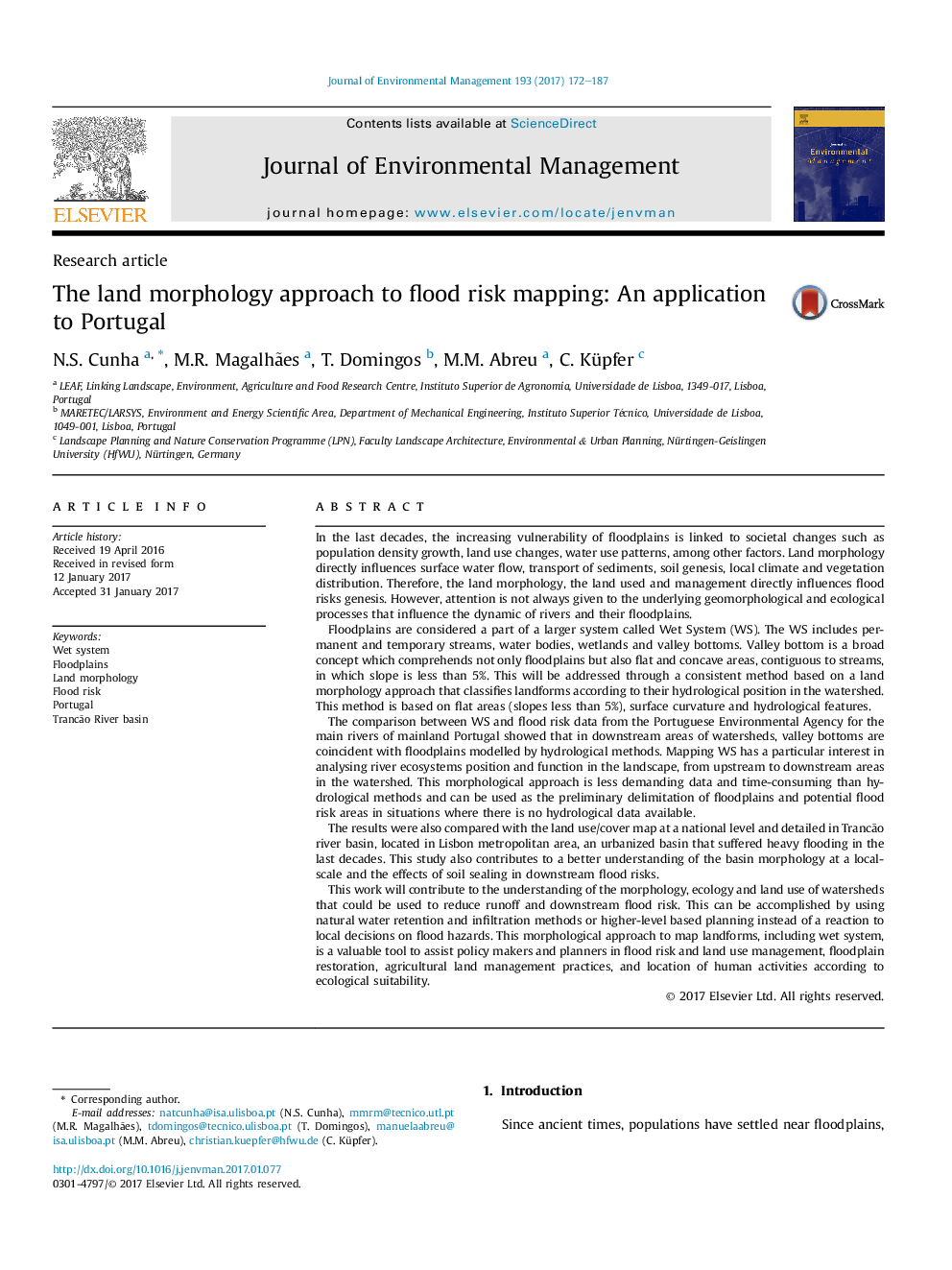| کد مقاله | کد نشریه | سال انتشار | مقاله انگلیسی | نسخه تمام متن |
|---|---|---|---|---|
| 5116822 | 1485222 | 2017 | 16 صفحه PDF | دانلود رایگان |
- Land morphology (LM) method consistently mapped all river ecosystems for Portugal.
- Valley bottoms coincide with floodplains in downstream areas of the watersheds.
- Easier and less demanding method to map floodplains at a large scale.
- LM approach is a complementary tool for land use planning and flood risk mapping.
In the last decades, the increasing vulnerability of floodplains is linked to societal changes such as population density growth, land use changes, water use patterns, among other factors. Land morphology directly influences surface water flow, transport of sediments, soil genesis, local climate and vegetation distribution. Therefore, the land morphology, the land used and management directly influences flood risks genesis. However, attention is not always given to the underlying geomorphological and ecological processes that influence the dynamic of rivers and their floodplains.Floodplains are considered a part of a larger system called Wet System (WS). The WS includes permanent and temporary streams, water bodies, wetlands and valley bottoms. Valley bottom is a broad concept which comprehends not only floodplains but also flat and concave areas, contiguous to streams, in which slope is less than 5%. This will be addressed through a consistent method based on a land morphology approach that classifies landforms according to their hydrological position in the watershed. This method is based on flat areas (slopes less than 5%), surface curvature and hydrological features.The comparison between WS and flood risk data from the Portuguese Environmental Agency for the main rivers of mainland Portugal showed that in downstream areas of watersheds, valley bottoms are coincident with floodplains modelled by hydrological methods. Mapping WS has a particular interest in analysing river ecosystems position and function in the landscape, from upstream to downstream areas in the watershed. This morphological approach is less demanding data and time-consuming than hydrological methods and can be used as the preliminary delimitation of floodplains and potential flood risk areas in situations where there is no hydrological data available.The results were also compared with the land use/cover map at a national level and detailed in Trancão river basin, located in Lisbon metropolitan area, an urbanized basin that suffered heavy flooding in the last decades. This study also contributes to a better understanding of the basin morphology at a local-scale and the effects of soil sealing in downstream flood risks.This work will contribute to the understanding of the morphology, ecology and land use of watersheds that could be used to reduce runoff and downstream flood risk. This can be accomplished by using natural water retention and infiltration methods or higher-level based planning instead of a reaction to local decisions on flood hazards. This morphological approach to map landforms, including wet system, is a valuable tool to assist policy makers and planners in flood risk and land use management, floodplain restoration, agricultural land management practices, and location of human activities according to ecological suitability.
Journal: Journal of Environmental Management - Volume 193, 15 May 2017, Pages 172-187
